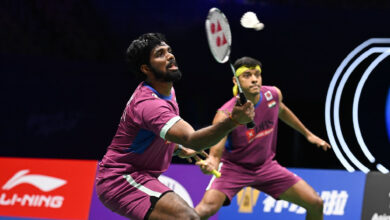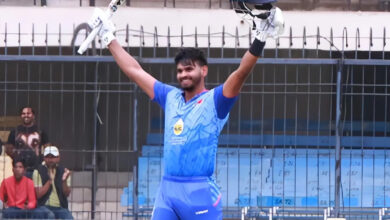Why is Badminton prize money so less compared to Tennis? | Badminton News

The World Tour Finals, the season ending spectacle in badminton, to be held in Hangzhou from December 13-17 has announced a prize kitty of 2.5 million USD. For yet another year, tennis’ season opening Slam, the Australian Open will kick off a month later than badminton’s richest, and dwarf the earnings, in comparison. The singles champion at AO will receive a top up raise over $2,975,000, that’s 2.9 million USD. The comparison isn’t suddenly interesting, and has been the norm forever. But the juxtaposition of 2.5 million spread across five categories and filtering down in shuttle and 2.9 million solely for the winner in tennis, piques curiosity once again over what badminton could mull over to pull itself out of these modest tournament earnings for its players.
Former international Ajay Jayaram moved on from the sport, armed himself with a natty management degree and has begun working for a top consultancy firm now. While as an athlete, he made his peace with badminton not being remotely comparable to tennis in paychecks, he also watched his peers Saina Nehwal and PV Sindhu draw endorsements higher than or comparable to any other top shuttler in the world.
He believes the financial booster to international badminton could hinge on whether India steps up to become a consent powerhouse in the sport, i.e throw up regular world winners who can then help proliferate the sport in the greater sporting and English-speaking territories like the USA. Like Bollywood and cricket, he wonders whether badminton can bag attention of global corporations if it finds the next level of success in the form of sustained Indian champions, and slowly start bridging the gap with tennis.
Years of Chinese dominance didn’t really catapult badminton into the next money orbit, and it has stayed financially modest compared to other sports with an annual circuit – tennis and golf. Can India provide that impetus?
There are plenty of missed opportunities, and some harsh truths to contend with first. India’s Thomas Cup team triumph, like the World Cup of badminton in 2022, had one of the coldest responses from Indian industry, beyond wordy applauding with flag and emojis on Twitter. The federation will tell you how difficult it is to put together a sponsorship bouquet for Tour events India hosts.
The Indian pro-league has screeched to a halt, and PBL teams aren’t exactly reporting profits or even breaking even. The Saina-Sindhu peaks have come and gone, Satwik-Chirag despite scoring some brilliant bonafide global title wins this year, aren’t exactly matching cricketers on endorsements. An Olympic gold could change that, but Ajay reckons India will need consent high-level wins across singles and doubles categories, not just barrage of headlines of smaller titles, to pierce that thick layer of corporate indifference towards badminton. Yet, should India produce champions in a cluster in coming years, it could reel in the global sponsorships just like cricket, he maintains.
Internationally, instead of a lot of jazzing up and tinkering of score systems, Ajay believes what badminton has actually lacked in drawing out big money, is a steady format and unyielding tradition. “Tennis has had a fixed calendar with four Grand Slams for years, and they don’t keep changing things like scoring system and the top tier of competition,” he says, instructional to badminton which keeps rumbling out new events, and has too many changes in tournament structure and its point formats.
Were he to build a pitch for a tournament, he would harp on nothing else but the insanely good variations in strokeplay that badminton boasts of, and just how imminently watchable it has become for broadcasters.
It’s that strange sport that many have played at the amateur levels across the world, but is stuck in a viewership loop only spanning Asia and a bit of Denmark. That, there aren’t champions or even serious contenders from sporting hubs USA, Australia and all of Africa and South America, and it’s only threatening to explode for years in Europe despite Carolina Marin’s emergence, means it remains Asian in its engagement with big money. Ajay believes that LA hosting the Olympics in 2028 might not change much for the game there, but a champion from the States could.
Badminton’s cultural contours bracketing it to Asia limit its marketability, and though wholesale changes will find resance, Ajay believes the global running of a sport like tennis is also significantly different to badminton. “Just the way the federation structures are. Tennis is more privately run, more accountability, less bureaucratic where everyone performs their role and easier to deal with. Tennis is more athlete-oriented. In badminton, it’s tough for athletes to break away from federation and take a gamble of going it alone. They need funding. And it becomes a cycle,” he says. Earnings are modest, and federations rely on federal funding and exercise fed control. “Badminton still needs a hybrid model to develop players which means relying on federation funding,” he adds.
Closely tied in with that is the autonomy of athletes which ensured tennis players demanded more of their share. Badminton, tautly controlled, with China as leading nation, and severely restricted given it barely communicates in English across the eastern straits is simply not bothered to reach out enough, and woo global corporations.
With its extreme fitness, intense skills and beautiful strokemaking, badminton ought to have been raking in much more than 2.5 million USD for its richest yearly tournament. It missed the Lin Dan-Lee Chong Wei window of opportunity, even though it ran concurrently with Federer-Nadal. It might well need to wait for a string of precious Indian careers to take off, and then use the knockback of the launcher to bring its prize money to look better than a mere fraction of what tennis earns.







